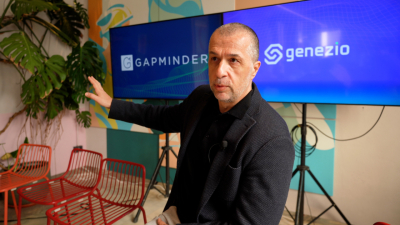With new competitors entering the financial services market, a cost-of-living crisis, and economic uncertainty, banks need to return to their innovative roots to retain and acquire customers and remain profitable.
The emergence of neo-banks, and the advent of tech giants in the financial space have disrupted traditional banking by raising customer expectations of what “good” looks like.
Customers expect personalized and convenient banking products and services, putting pressure on incumbents to adapt and shift their focus from being product-centric to being customer-centric.
The catch: While neo-banks and tech giants boast modern technology stacks and highly skilled development teams, 95% of incumbent banks say they are still hindered by legacy systems and most struggle to attract and retain top tech talent.
Citește și:
This means that accessing new customer segments with personalized products, harnessing new opportunities like embedded finance, and responding quickly to market changes is too costly, risky, and time-consuming for most incumbents.
Banking Transformation Hasn’t been Delivered
Banks spent millions, often billions, on digital transformation in the past 10 years, but most of these projects failed to deliver the modern technology architecture they need to compete. To stay relevant, banks have had no other option than to innovate on top of their monolithic, inflexible systems, catapulting them into a vicious cycle of increasing risks and costs.
The cycle usually goes like this:
Because IT spends most of its time maintaining ageing systems, innovation projects are slow and costly. Business teams resort to Point SaaS or COTS solutions to get new products and digital experiences to market quickly but fail to deliver ROI due to inflexibility - banks end up with undifferentiated offers that fail to meet customer needs.
Citește și:
Deploying SaaS solutions further compounds the problem, as these require technical workarounds on existing systems, resulting in more complex architectures, scattered data, and increased maintenance costs. Innovation becomes even more costly; modernization becomes even riskier.
Banks need to modernize but can’t afford to risk millions or pump the brakes on innovation. They need to innovate but can’t keep incurring technical debt.
A New Path Forward in Banking Technology
Incumbents need a new generation of banking technology that allows them to innovate and modernize at the same time. They need to decouple product and experience innovation from monolithic systems and give their business users easy-to-use tools that let them create new products, offers, and customer journeys quickly–without having to get on an IT or vendor roadmap.
Citește și:
IT teams need modular, extendable banking business capabilities that help them fill gaps in their systems to support innovation, while enabling them to gradually decompose and revamp their existing architectures with new, cloud-native components.
Bringing together the best of vertical banking solutions’ pre-built capabilities and low-code/no-code platforms is the way forward to ensure banks modernize and get to market fast with unique, differentiated propositions for their customers. A new category in banking technology is emerging that does just that: fintech enablement.
Incumbents as the New Disruptors
Incumbents can go back to their innovative roots and leverage the wealth of data at their fingertips to create exciting, personalized new products and services.
With the right technology in place, they can leverage their experience and established footprint to become real disruptors and create value for customers. The wealth of advantages over new entrants make incumbents uniquely positioned to take the lead in the next generation of financial services.
Citește și:
Modernization and innovation should not be mutually exclusive goals. With a strategy that prioritizes both, coupled with the right tech partners that empower innovation, banks can become best-in-class innovators that meet consumer needs and launch new products without sacrificing speed or quality.
Are you ready for the new path forward?













